Övertorneå, Norrbotten
Just a few miles from the Swedish border to Finland, you’ll find the summer farm Hanhivittikko. The name means “the goose shrubbery” in the local language meänkieli, which has a lot of similarities to Finnish.
When the summer farm was built in the 1860s for the villages Haapakylä and Matarengi, there were 18 summer farms in the Övertorneå parish, called kenttä in meänkieli. A map from 1875 shows that Hanhivittikko once had eleven buildings. Today, eight of these remain, with one of the more unusual barns having been rebuilt.
In the summertime, several families lived in their own cottages at Hanhivittikko. Although they worked on the farm, they also had some time to rest and enjoy the long, bright summer nights. For a period of time, the farmers hired professional milkmaids – one of returned for thirty years to work at the summer farm. The milk was processed on the summer farm until the dairy was built in Övertorneå in 1925.
During the second world war, some seventy temporary barracks on the summer farm served as housing to soldiers at the military station Ö2, the Saarijärvi camp. In 1944, 50 000 people and 25 000 cows and horses were evacuated from Finland across the river Torne, during dramatic circumstances. For a short period of time thereafter, Hanhivittikko was used as a refugee camp.

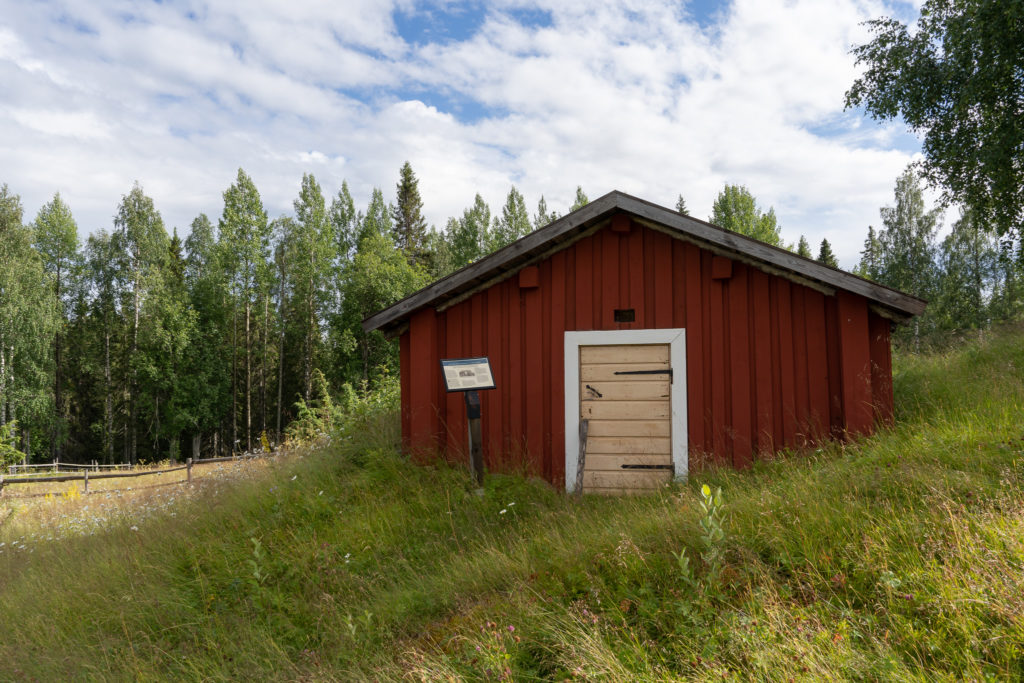
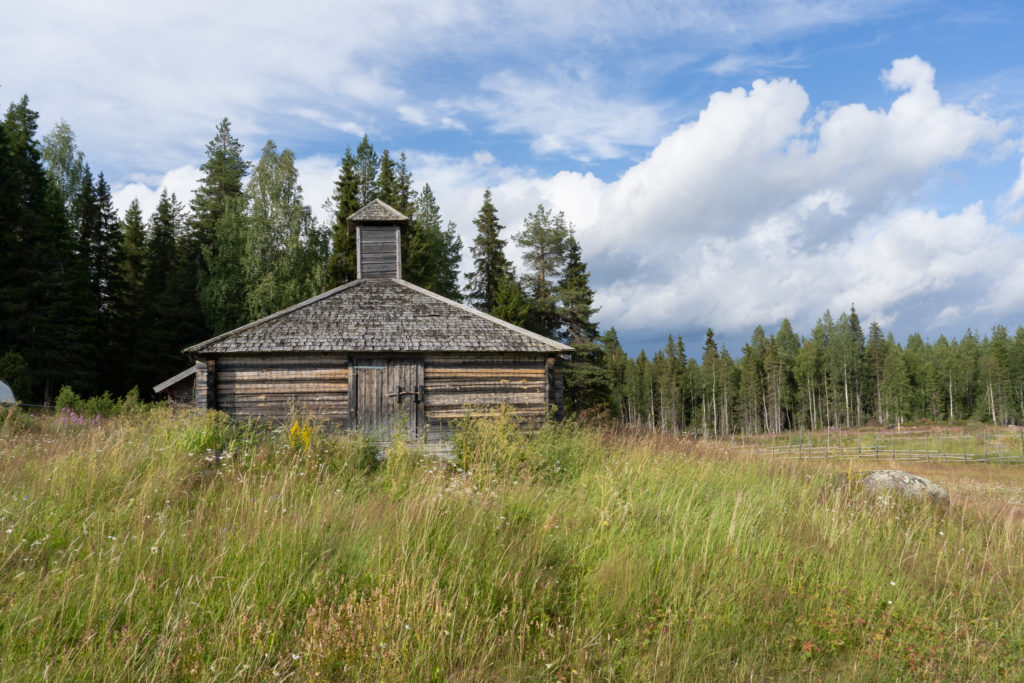
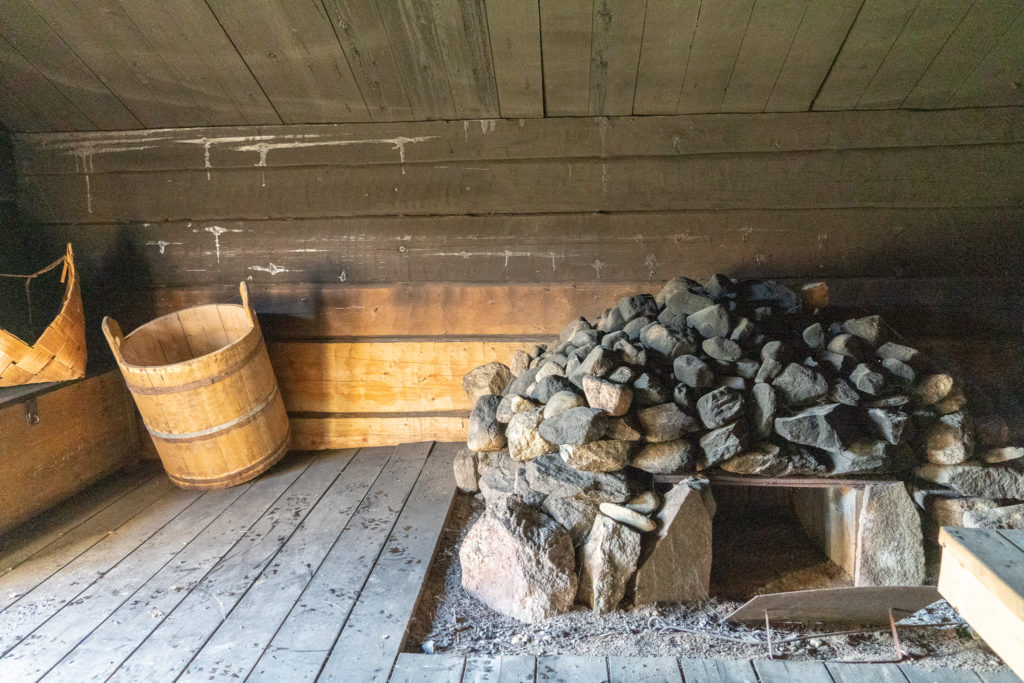
Sauna bathing on the summer farm
Berta and Axel Tapani were the last two people who lived regularly on the summer farm. Until 1965, they moved here every summer to expand the animals’ pastures and spend time with friends. On the Saturdays, the family relaxed by using the smoke sauna.
A sauna isn’t the first building that most people associate with summer farms, but even if the summer farms around Sweden have a lot in common, they’ve never followed an exact pattern. Instead, they’ve been influenced by the needs, circumstances and local traditions. The people of the Torne valley would rather ask, with some surprise, why the summer would not have a sauna. This part of Sweden has a strong Finnish influence. Here, the sauna culture is a strong and natural part of everyday life.
The Hanhivittikko sauna is a copy of the original building, which was in too bad condition to be saved. As many summer farms in the area had saunas, the summer farm workers would take turns to go to eachother’s saunas to use them together, both in order to save on the firewood and because it was more fun with company. When Berta and Axel Tapani had Hanhivittikko, they used the sauna every Saturday evening, “whether it was needed or not”. Once the fire in the middle of the room had burnt out, they let the smoke out. Then they sat on the wooden benches and threw water on the hot rocks so that steam filled the room. Of course, they also whipped the skin with leafy branches of birch.
During the time of the Tapanis, around ten mountain cows made sure that the earth cellar was filled with thick sour milk called tjockmjölk or (in meänkieli) piimä. The rest of the milk was turned into butter and “coffee cheese”, a type of mild, chewy cheese that you put in the coffee and ate after finishing three cups. The rest of the milk was transported to the road with the help of an old bike carriage. Here, it was picked up and driven to the dairy in Övertorneå.
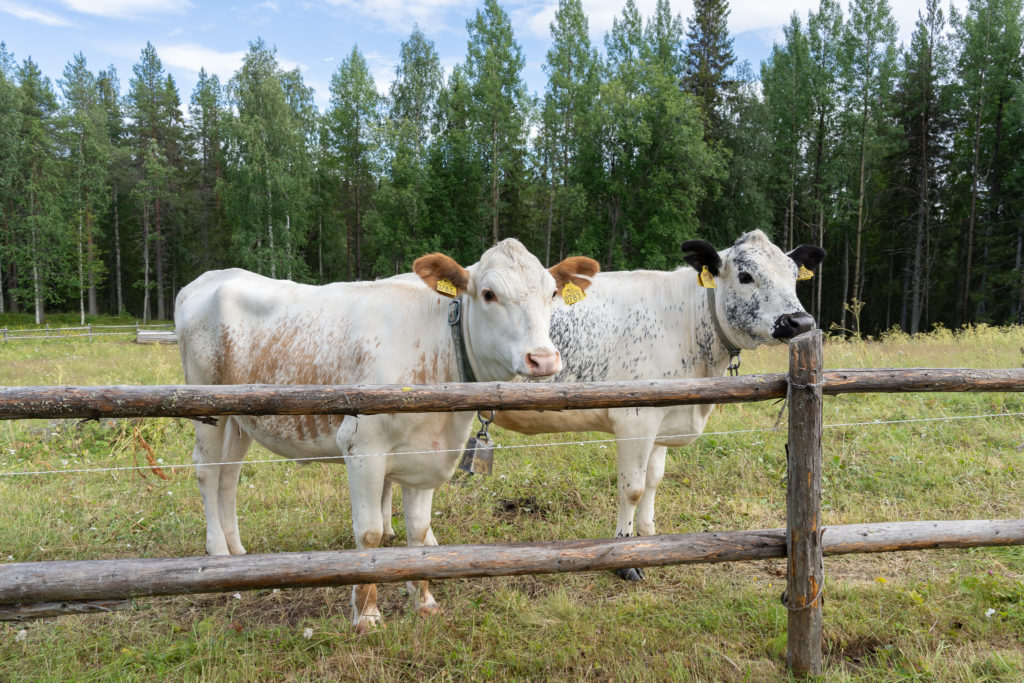
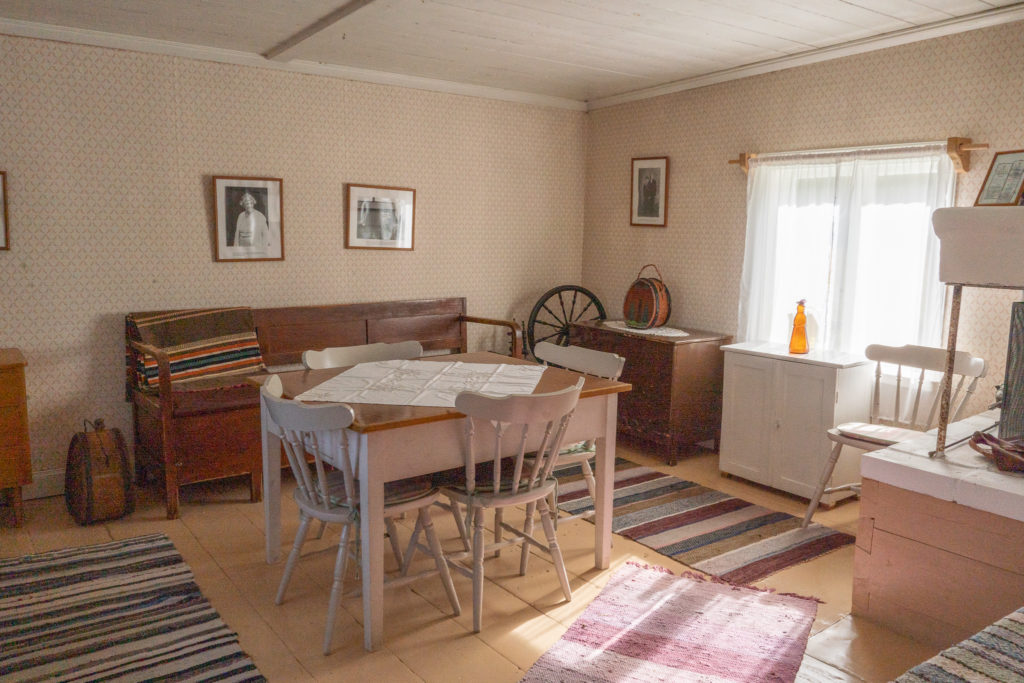
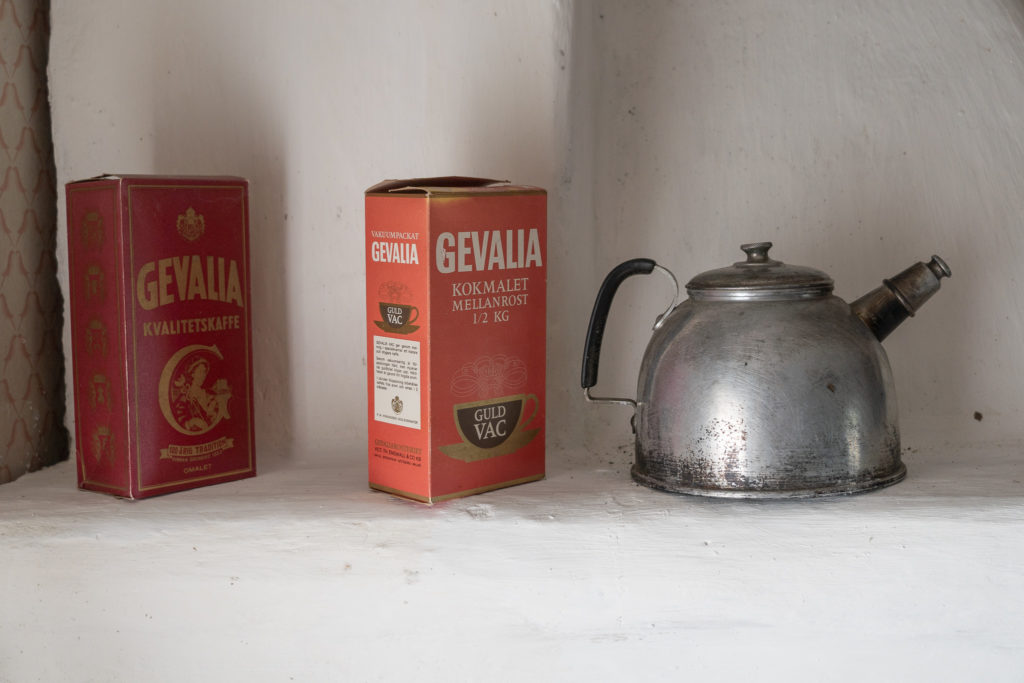
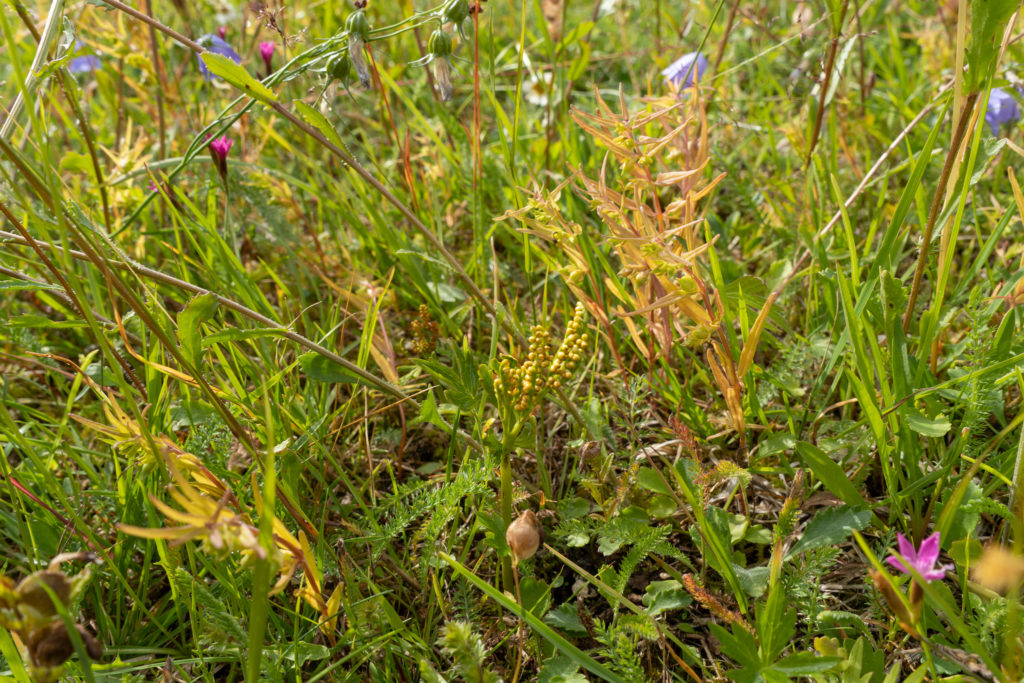
Unique flora on the summer farm grounds
A memorial stone is left as a reminder of the summer farm’s dramatic war history, but there are also traces of another sort. The hay for the horses of the XII cavalry was fetched from southern Sweden carried many kinds of seeds. The result is that its still possible to find maiden pink, downy oat-grass and imperforate st john’s-wort – plants that otherwise are unusual this far up north in the country.
The uniqe flora of the summer farm resulted in increased interest from botany enthusiasts in the 1990s. During stock-taking of plants, as many as 142 different sorts of plants have been identified, including rare plants such as lance-leaf moonwort.
In order to preserve the summer farm and the plant-rich meadows, the organization Friends of Hanhivittikko was formed. The organization was instrumental in pushing for the summer farm to be proclaimed the first cultural park of the county of Norrbotten. In the summer, large grounds on the farm are still kept open thanks to grazing from the cows, although a few meadows are cut using the traditional method of scything. Apart from tending to the grounds and the cows, the organizations also keeps the summer farm open for events such as haymaking feasts, church service and, at Christmas, a rice porridge feast.
Visit Hanhivittikko
The summer farm has a few activities every season. It is possible to rent a simple cottage or talk to the Friends of Hanhivittikko about arranging corprorate events, private parties, and the like. Those who are interested in volunteering get to tend to the pretty mountain cows Mansikka and Mustakorva, as well as staying in a genuine old summer farm cottage.
Do check out the advice for getting a good summer farm visit before you visit Hanhivittikko – as well as their website and Facebook-page.

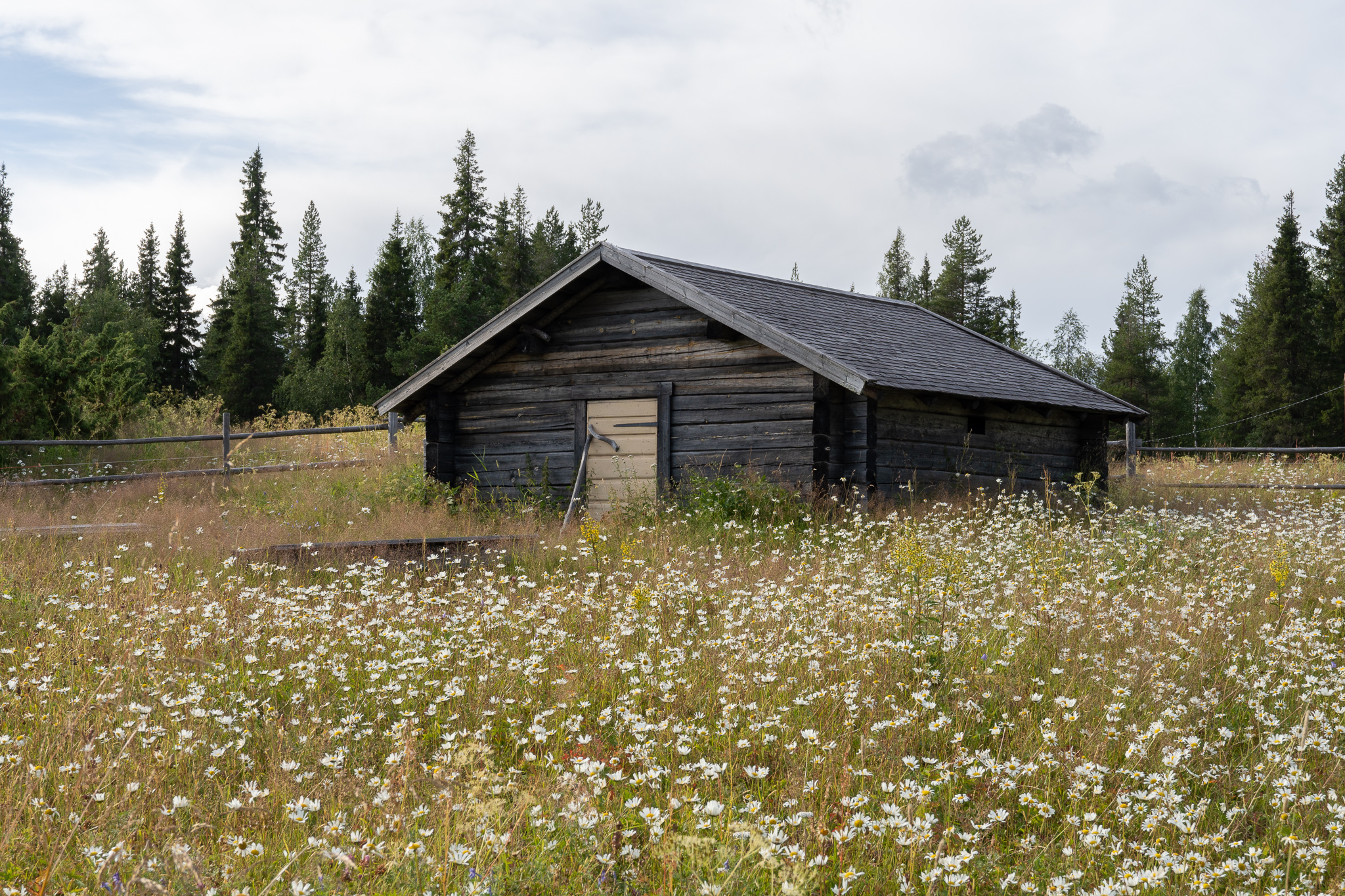

0 Comments